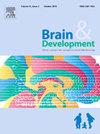Fukuyama congenital muscular dystrophy: Clinical features and therapeutic advances
IF 1.3
4区 医学
Q4 CLINICAL NEUROLOGY
引用次数: 0
Abstract
Fukuyama congenital muscular dystrophy (FCMD, a severe form of muscular dystrophy characterized by brain structural anomalies and ocular complications due to neuronal migration disorders, is notably limited mainly to Japan. Ninety percent of patients are unable to walk throughout their lives and die before the age of 20 due to respiratory failure and cardiomyopathy. At present, there is no cure. The founder variant, a 3-kb insertion in FKTN, is an SVA (SINE-VNTR-Alu) retrotransposon, and FCMD is a splicing disorder attributable the exon trapping function of this retrotransposon. A splicing modulation therapy targeting exon-trapping based on using antisense nucleic acids to block abnormal splicing is under development, and clinical trials have begun. Additionally, it was clarified that the gene product of FKTN is a glycosyltransferase that transfers ribitol-5-phosphate from cytidine diphosphate ribitol, a precursor for the synthesis of the O-mannosyl glycans of α-dystroglycan, a cell membrane component. This finding raises hopes for a prodrug therapy. Though patient numbers were small, previous clinical studies suggested that steroids are effective in FCMD. Thus, phase II clinical trials are underway with the aim of obtaining insurance approval. This review provides an overview of the clinical course and current status of treatments being developed for FCMD.
福山先天性肌营养不良症:临床特征和治疗进展
福山先天性肌营养不良症(Fukuyama congenital muscular dystrophy, FCMD)是一种严重的肌肉营养不良症,其特征是大脑结构异常和由神经元迁移障碍引起的眼部并发症,值得注意的是,主要局限于日本。90%的患者一生无法行走,在20岁之前因呼吸衰竭和心肌病而死亡。目前还没有治疗方法。FKTN中一个3 kb的插入,是一个SVA (sin - vntr - alu)反转录转座子,而FCMD是一种可归因于该反转录转座子的外显子捕获功能的剪切紊乱。基于反义核酸阻断异常剪接的靶向外显子捕获的剪接调节疗法正在开发中,并已开始临床试验。此外,FKTN的基因产物是一种糖基转移酶,可将胞苷二磷酸核糖糖醇转化为5-磷酸核糖糖醇,而胞苷二磷酸核糖糖醇是合成α-三磷酸糖聚糖(一种细胞膜成分)的o -甘露糖基聚糖的前体。这一发现为药物前治疗带来了希望。虽然患者人数很少,但先前的临床研究表明,类固醇对口蹄疫有效。因此,II期临床试验正在进行中,目的是获得保险批准。本综述概述了口蹄疫的临床过程和目前正在开发的治疗方法。
本文章由计算机程序翻译,如有差异,请以英文原文为准。
求助全文
约1分钟内获得全文
求助全文
来源期刊

Brain & Development
医学-临床神经学
CiteScore
3.60
自引率
0.00%
发文量
153
审稿时长
50 days
期刊介绍:
Brain and Development (ISSN 0387-7604) is the Official Journal of the Japanese Society of Child Neurology, and is aimed to promote clinical child neurology and developmental neuroscience.
The journal is devoted to publishing Review Articles, Full Length Original Papers, Case Reports and Letters to the Editor in the field of Child Neurology and related sciences. Proceedings of meetings, and professional announcements will be published at the Editor''s discretion. Letters concerning articles published in Brain and Development and other relevant issues are also welcome.
 求助内容:
求助内容: 应助结果提醒方式:
应助结果提醒方式:


